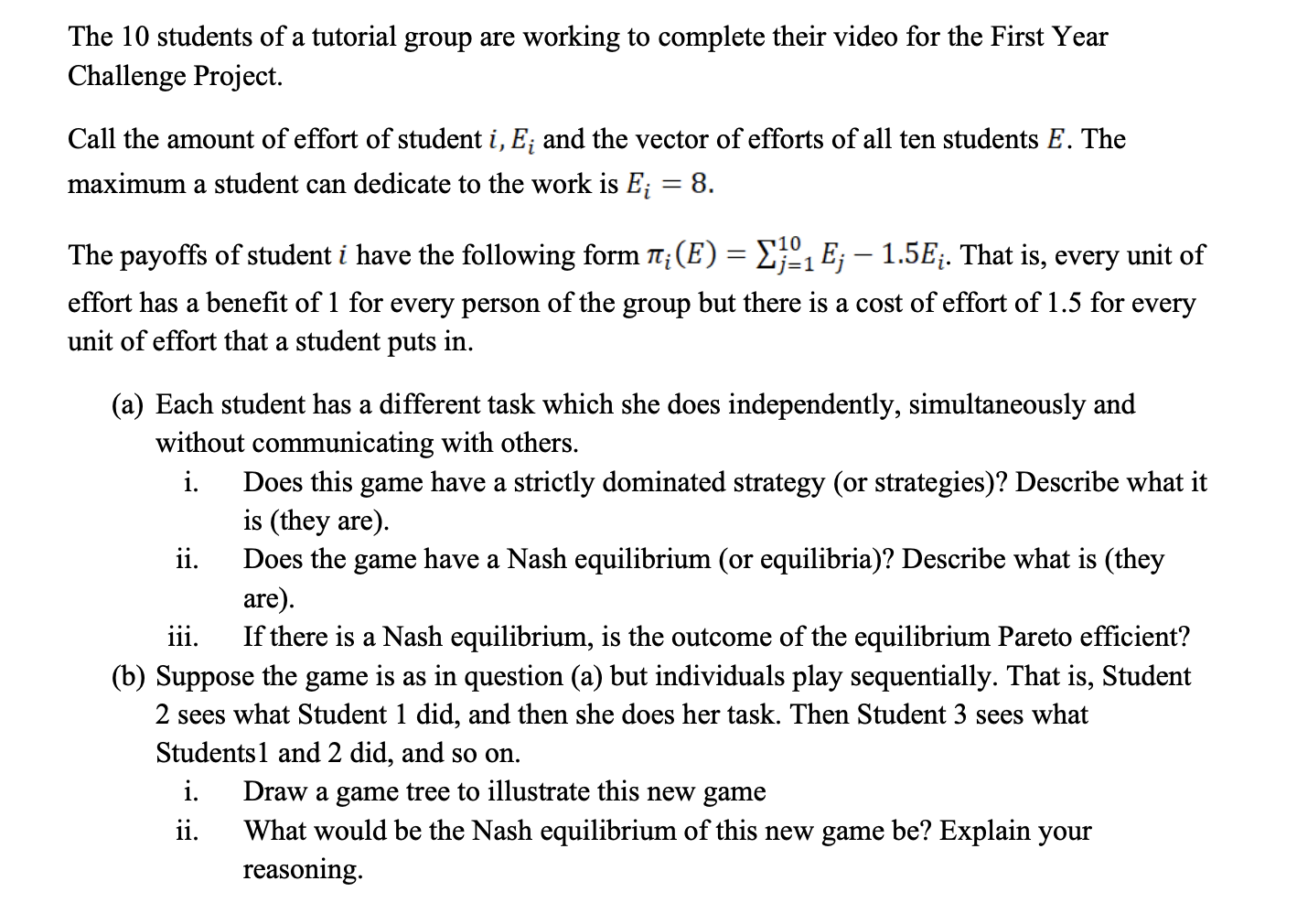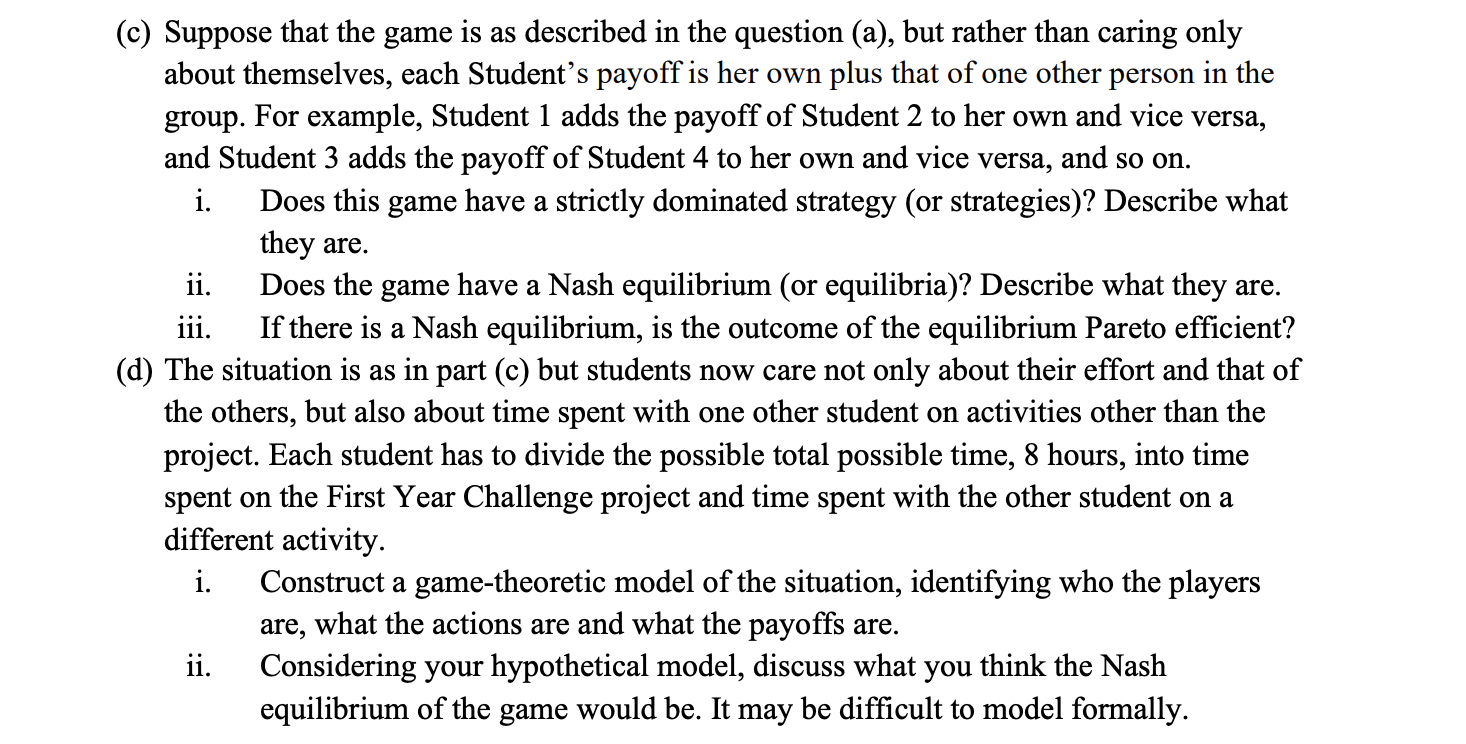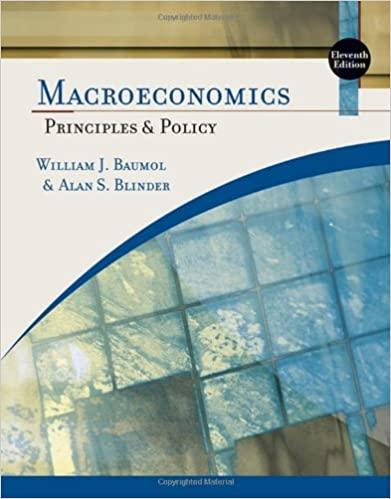please show the details, thanks!!!
The 10 students of a tutorial group are working to complete their video for the First Year Challenge Project. Call the amount of effort of student 1', E i and the vector of efforts of all ten students E. The maximum a student can dedicate to the work is E ,- = 8. The payoffs of student 1' have the following form 1:,- (E) = 11-21 E j 1.55}. That is, every unit of effort has a benet of 1 for every person of the group but there is a cost of effort of 1.5 for every unit of effort that a student puts in. (a) Each student has a different task which she does independently, simultaneously and without communicating with others. i. Does this game have a strictly dominated strategy (or strategies)? Describe what it is (they are). ii. Does the game have a Nash equilibrium (or equilibria)? Describe what is (they are). iii. If there is a Nash equilibrium, is the outcome of the equilibrium Pareto efficient? (b) Suppose the game is as in question (a) but individuals play sequentially. That is, Student 2 sees what Student 1 did, and then she does her task. Then Student 3 sees what Studentsl and 2 did, and so on. i. Draw a game tree to illustrate this new game ii. What would be the Nash equilibrium of this new game be? Explain your reasoning. (c) Suppose that the game is as described in the question (a), but rather than caring only about themselves, each Student's payoff is her own plus that of one other person in the group. For example, Student 1 adds the payoff of Student 2 to her own and vice versa, and Student 3 adds the payoff of Student 4 to her own and vice versa, and so on. i. Does this game have a strictly dominated strategy (or strategies)? Describe what they are. ii. Does the game have a Nash equilibrium (or equilibria)? Describe what they are. iii. If there is a Nash equilibrium, is the outcome of the equilibrium Pareto efficient? (d) The situation is as in part (c) but students now care not only about their effort and that of the others, but also about time spent with one other student on activities other than the project. Each student has to divide the possible total possible time, 8 hours, into time spent on the First Year Challenge project and time spent with the other student on a different activity. i. Construct a game-theoretic model of the situation, identifying who the players are, what the actions are and what the payoffs are. ii. Considering your hypothetical model, discuss what you think the Nash equilibrium of the game would be. It may be difficult to model formally








